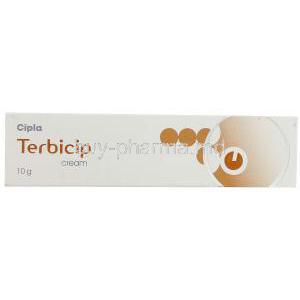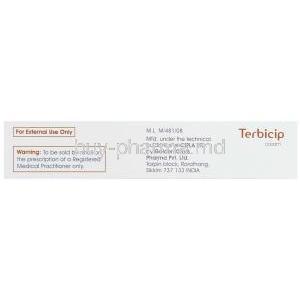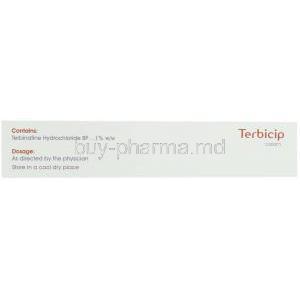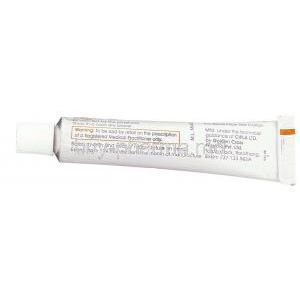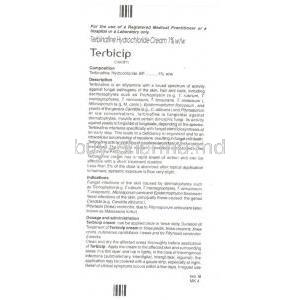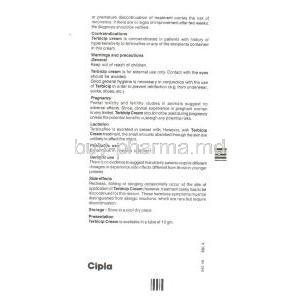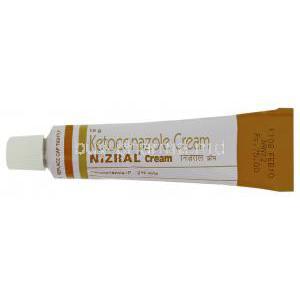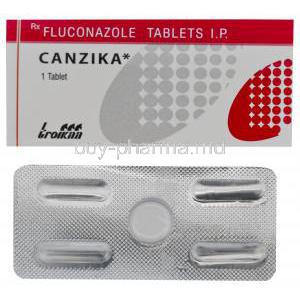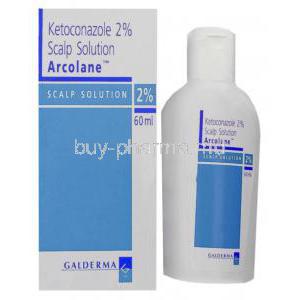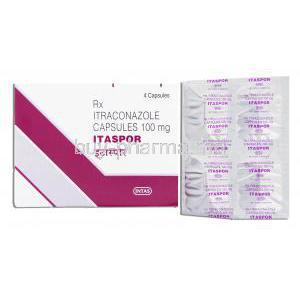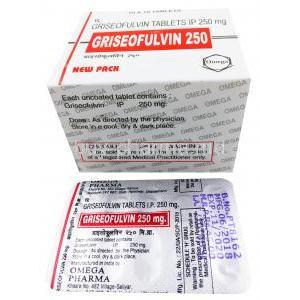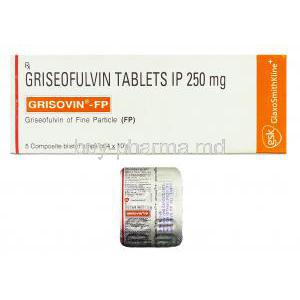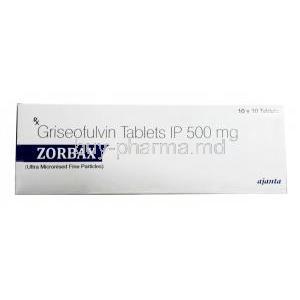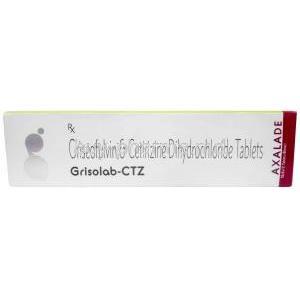Introduction
Overview of Terbicip Cream
Terbicip Cream is a topical antifungal preparation formulated to combat a wide range of superficial fungal infections. It is widely prescribed in dermatology for its potent action against dermatophytes and yeasts, offering targeted relief for patients affected by persistent and often recurrent skin conditions. The cream is valued for its efficacy, ease of application, and favorable tolerability profile.
Classification of Terbinafine Hydrochloride (allylamine antifungal)
The active substance in Terbicip Cream is Terbinafine Hydrochloride, an allylamine antifungal agent. This class of antifungals differs from azoles in its mechanism of action, specifically targeting fungal enzymes critical to cell membrane synthesis. By intervening in unique metabolic pathways, allylamines provide a selective advantage in fungal eradication with minimal systemic effects when applied topically.
Importance of Topical Antifungal Therapy in Dermatology
Topical antifungal therapies serve as a cornerstone in dermatological practice. They deliver direct action at the infection site, limit systemic exposure, and reduce the risk of drug interactions. In conditions such as athlete’s foot or ringworm, localized treatment is often sufficient to eliminate infection and restore skin integrity, underscoring their importance in first-line therapy.
Composition
Active Ingredient: Terbinafine Hydrochloride Concentration
Each gram of Terbicip Cream contains a standardized concentration of Terbinafine Hydrochloride, typically 1%, ensuring consistent antifungal activity. This strength is optimal for eliminating fungal pathogens on the skin while maintaining safety for repeated applications.
Inactive Ingredients and Formulation Details
The formulation includes inactive excipients designed to stabilize the product, enhance absorption, and provide a smooth base. Emollients and stabilizers ensure the cream spreads evenly and penetrates the superficial skin layers, maximizing therapeutic action.
Pharmaceutical Form and Packaging
Terbicip Cream is supplied in collapsible tubes of varying sizes, generally 10–30 grams, allowing for flexible use in localized or more extensive infections. Its compact packaging ensures ease of storage and portability.
How Terbicip Cream Works
Mechanism of Action of Terbinafine
Terbinafine acts by disrupting essential enzymatic pathways in fungi, particularly targeting squalene epoxidase. This enzyme plays a pivotal role in the synthesis of ergosterol, a vital component of fungal cell membranes.
Inhibition of Squalene Epoxidase and Ergosterol Biosynthesis
By blocking squalene epoxidase, Terbinafine prevents the formation of ergosterol, leading to the accumulation of toxic squalene within fungal cells. This dual effect results in impaired membrane integrity and subsequent fungal cell death.
Effects on Fungal Cell Membrane Integrity
The absence of ergosterol compromises membrane fluidity and permeability, leaving fungal cells unable to maintain homeostasis. The accumulation of squalene further disrupts cell viability, ensuring a fungicidal rather than fungistatic outcome.
Spectrum of Antifungal Activity (Dermatophytes, Yeasts, Molds)
Terbinafine is active against a broad spectrum of fungi:
- Dermatophytes: Trichophyton, Microsporum, Epidermophyton species
- Yeasts: Candida species and Malassezia furfur
- Molds: Certain non-dermatophyte molds in superficial infections
Medical Uses
Treatment of Tinea Corporis (Ringworm of the Body)
Applied directly to affected patches, Terbicip Cream effectively eliminates dermatophytes causing circular, scaly lesions characteristic of ringworm.
Treatment of Tinea Cruris (Jock Itch)
For infections localized to the groin, the cream provides rapid relief from redness, itching, and scaling caused by dermatophytes in warm, moist environments.
Treatment of Tinea Pedis (Athlete’s Foot)
Terbicip is frequently prescribed for interdigital and plantar athlete’s foot, addressing fissures, itching, and persistent scaling common among athletes and individuals exposed to communal showers.
Treatment of Tinea Manuum (Fungal Infection of the Hands)
Dermatophyte infections of the hands can mimic eczema or dryness. Topical terbinafine ensures clearance of fungal pathogens with symptomatic relief.
Treatment of Tinea Versicolor (Pityriasis Versicolor)
The cream is also indicated in pityriasis versicolor, a condition caused by Malassezia furfur, resulting in patchy skin discoloration. Terbinafine restores normal pigmentation by eliminating yeast overgrowth.
Treatment of Cutaneous Candidiasis
Candida infections of skin folds respond favorably to topical terbinafine, reducing erythema, maceration, and pruritus.
Onychomycosis (Fungal Nail Infections) – Limited Topical Efficacy
While oral therapy is more effective, topical terbinafine may be used in mild or adjunctive management of nail fungal infections, particularly when systemic therapy is contraindicated.
Seborrheic Dermatitis (Adjunctive Use)
In some cases, Terbicip Cream is prescribed as adjunctive therapy in seborrheic dermatitis to reduce fungal involvement and control scaling.
Off-Label Uses
Fungal Folliculitis
Emerging evidence supports the use of topical terbinafine in managing fungal folliculitis, reducing papules and pustules caused by fungal invasion of hair follicles.
Intertrigo due to Candida or Dermatophytes
The cream may be applied in intertrigo, a condition involving inflammation of skin folds, where fungal colonization worsens irritation.
Adjunctive Therapy in Recurrent Fungal Infections
In patients prone to recurrence, Terbicip Cream may be recommended alongside systemic treatments to reduce relapse rates.
Preventive Use in High-Risk Individuals (Immunocompromised, Athletes)
Topical terbinafine has preventive potential in individuals with high exposure risk, such as athletes or immunocompromised patients, though such use should be guided by medical advice.
Dosage and Administration
Recommended Topical Application Frequency
Terbicip Cream is generally applied once or twice daily, depending on the severity and type of infection. Regular application ensures optimal outcomes.
Duration of Treatment for Different Infections
Typical treatment durations include:
- Tinea corporis and tinea cruris: 1–2 weeks
- Tinea pedis and tinea manuum: 2–4 weeks
- Tinea versicolor: 2 weeks
- Candidiasis: 1–2 weeks
Proper Application Technique (Amount, Coverage Area, Skin Preparation)
Patients are advised to wash and dry the affected area before applying a thin film of cream. A margin of healthy skin around the lesion should also be covered to prevent spread.
Advice on Adherence and Continuation after Symptom Resolution
Even if symptoms resolve early, treatment should be continued for the full recommended course to ensure eradication and reduce the likelihood of recurrence.
Side Effects
General Overview of Tolerability
Terbicip Cream is well tolerated in most individuals. Adverse effects are usually mild and localized to the site of application.
Common Side Effects
- Mild burning or stinging at the application site
- Redness, itching, or dryness
- Scaling or peeling of the skin
Serious Side Effects
- Allergic reactions, such as rash, swelling, or blistering
- Contact dermatitis with persistent irritation
- Severe local irritation requiring discontinuation
Interaction with Other Substances
Minimal Systemic Absorption and Low Drug Interaction Risk
Due to negligible systemic absorption, Terbicip Cream carries an extremely low risk of systemic drug interactions. This makes it a safe option in polypharmacy settings.
Possible Interactions with Other Topical Medications
Concurrent use with other topical treatments may increase the risk of skin irritation. Care should be taken when layering multiple dermatological preparations.
Precautions with Occlusive Dressings or Concurrent Antifungal Use
Use under occlusive dressings should be avoided unless directed by a healthcare provider, as it may increase absorption and local irritation. Combining with other antifungal agents is typically unnecessary and may increase sensitization risks.
Warnings and Contraindications
Contraindications
Terbicip Cream should not be used in individuals with known hypersensitivity to terbinafine or any of the excipients in its formulation. Allergic reactions may range from mild skin irritation to severe dermatitis. Application to mucous membranes or broken, ulcerated skin is contraindicated, as absorption and irritation risks increase significantly in these areas.
Warnings
Incomplete courses of therapy often lead to unsatisfactory outcomes. If treatment is discontinued prematurely, the fungus may not be fully eradicated, resulting in persistent or recurrent infection. Patients are strongly advised to maintain proper hygiene and follow-through with the entire prescribed duration of treatment. Without adequate hygiene measures—such as keeping feet dry or disinfecting footwear—reinfection or recurrence is common.
Important Precautions
To maximize effectiveness and reduce risks, several precautions should be observed:
- Avoid contact with eyes, oral cavity, and mucosal surfaces to prevent irritation.
- Maintain good personal hygiene: wear clean cotton socks, avoid excessive moisture, and regularly disinfect shoes.
- Do not share towels, socks, or footwear, as fungal infections spread easily through contaminated personal items.
- Discontinue application immediately if severe irritation, blistering, or allergic symptoms develop.
Careful Administration
Monitoring in Patients with Extensive Fungal Involvement
Extensive fungal infections may require prolonged treatment and careful monitoring. In some cases, combination therapy with systemic antifungals is necessary, and the topical cream should be used as adjunctive treatment.
Considerations for Immunocompromised Individuals
Patients with weakened immunity—such as those with diabetes, HIV, or on immunosuppressive therapy—may respond more slowly to treatment. Regular follow-up is recommended to monitor progress and prevent complications.
Use in Individuals with Chronic Skin Conditions
Patients with pre-existing dermatological conditions like eczema or psoriasis may have heightened skin sensitivity. Careful observation is required, and any worsening of underlying skin disorders should prompt discontinuation.
Administration in Special Populations
Elderly Patients: Tolerability and Skin Sensitivity
Elderly individuals often have thinner and more fragile skin, which may increase susceptibility to irritation. However, Terbicip Cream is generally well tolerated and effective in this population when used with caution.
Pregnant Women: Safety Data and Clinical Recommendations
There is limited clinical data on the use of topical terbinafine in pregnancy. Although systemic absorption is minimal, use should be restricted to cases where the potential benefits outweigh any theoretical risks. Consultation with a healthcare provider is essential.
Nursing Mothers: Risk of Exposure Through Skin Contact with Infants
Terbinafine may pass onto the infant’s skin through direct contact. Nursing mothers should avoid applying the cream on or near the breasts and ensure that treated areas do not come into contact with the infant’s skin.
Children: Efficacy and Safety Profile, Age-Specific Guidance
The safety and efficacy of Terbicip Cream in children have been demonstrated for superficial fungal infections. However, usage in very young children should be under medical guidance, with age-specific dosing and monitoring recommendations followed carefully.
Overdosage and Handling Precautions
Likelihood of Overdose with Topical Use
Overdose with topical Terbicip Cream is extremely unlikely due to minimal systemic absorption. Nevertheless, misuse or accidental ingestion should not be ignored.
Symptoms of Accidental Oral Ingestion
Ingestion of significant amounts may cause gastrointestinal upset such as nausea, vomiting, abdominal pain, and dizziness. Prompt medical assessment is warranted in such cases.
Emergency Measures in Case of Accidental Ingestion or Eye Exposure
If ingested, supportive treatment should be initiated. Activated charcoal may be considered in severe cases. In the event of accidental eye exposure, immediate rinsing with copious amounts of water is recommended, followed by medical consultation if irritation persists.
Safe Storage and Handling Instructions
The cream should be kept out of reach of children to prevent accidental ingestion. After each use, the tube should be tightly closed and stored properly to maintain its efficacy.
Storage and Stability
Recommended Storage Temperature
Store Terbicip Cream at a controlled room temperature, ideally below 25°C (77°F). Avoid freezing as it may alter the cream’s texture and efficacy.
Protection from Light and Moisture
Keep the product in its original packaging to protect it from direct sunlight and excess humidity, which can degrade the formulation.
Shelf Life and Expiration Considerations
Check the expiration date clearly marked on the packaging before use. Expired medication may lose potency and should be discarded safely according to local pharmaceutical waste regulations.
Conclusion
Summary of Therapeutic Value
Terbicip Cream, with its potent antifungal activity, offers an effective topical solution for a wide range of dermatophyte and yeast infections. Its minimal systemic absorption ensures a favorable safety profile for most patients.
Key Points for Safe and Effective Use
Adherence to treatment duration, maintenance of personal hygiene, and avoidance of premature discontinuation are crucial factors in achieving complete cure and preventing recurrence. Observing contraindications and special precautions further enhances treatment success.
Role of Terbicip Cream in Managing Common Fungal Infections
As a first-line therapy for many superficial fungal infections, Terbicip Cream holds a vital place in dermatological practice. Its efficacy, ease of use, and tolerability make it an indispensable option for patients and healthcare providers alike.


